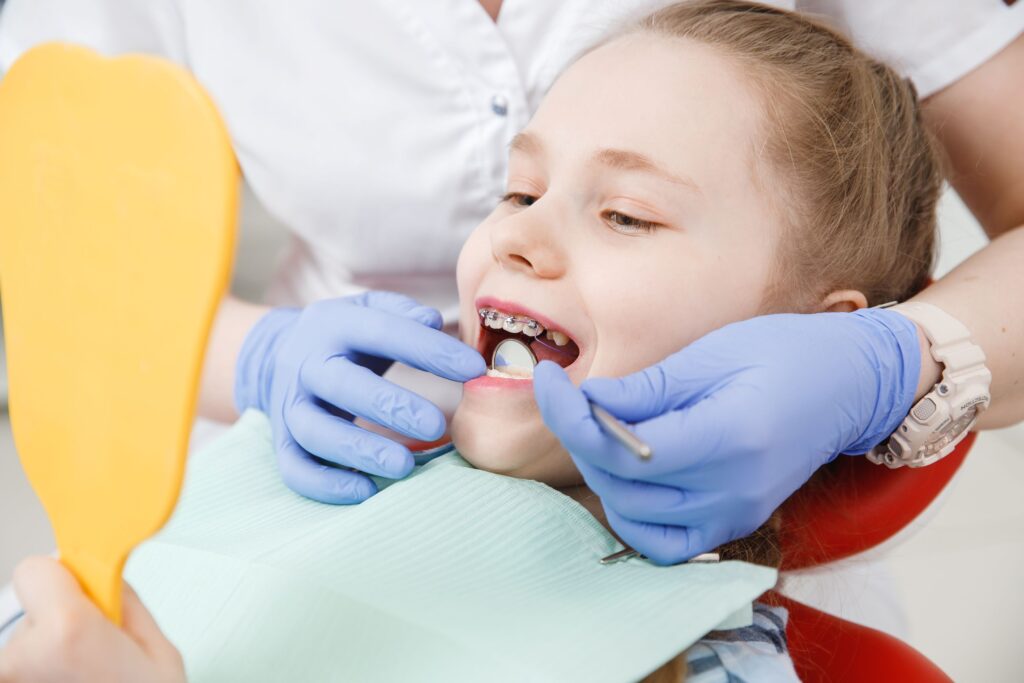
Have you noticed that your child’s upper teeth jut out prominently over their bottom row? Alternatively, does your little one seem to rest their upper arch inside their lower one when they close their mouth? If so, they might have a bite misalignment, also called malocclusion.
You might not think it’s a big deal, but leaving the problem unaddressed can impact how their smile develops over time. Continue reading to learn more about overbites and underbites and how they’re treated!
What is an Overbite?
Technically, most people naturally have a bit of an overbite. In fact, it’s considered ideal if your upper arch slightly overlaps the bottom teeth, with the cusps of the upper molars fitting into the grooves of the lower ones.
However, when this overlap extends beyond 2-3 mm, it’s considered an overbite. If your kid’s upper arch jets out too far, it can wear down their enamel unevenly or prematurely, increasing their vulnerability to cavities, chips, and cracks. It can also impede their speech development or cause chewing difficulties and jaw pain.
What is an Underbite?
An underbite occurs when your kid’s lower arch extends past the upper so that their top front teeth sit behind the bottom ones when they close their mouth. This can be caused by genetics, growth abnormalities, or even excessive thumb or pacifier-sucking.
Like an overbite, this type of misalignment can cause uneven damage to your child’s enamel, leaving them more likely to develop tooth decay, gum disease, or other oral issues. It can also negatively impact their ability to speak properly and can cause more serious TMJ (temporomandibular joint) concerns, like a stiff or locked jaw.
How are Bite Misalignments Treated?
As you can see, malocclusions like overbites and underbites have a significant impact on your child’s dental health. If you’ve noticed that their jaw doesn’t come together correctly when they close their mouth, the next best step is to contact their pediatric dentist for a consultation.
Their provider might suggest different orthodontic services that can help, or if they do not personally offer them, can refer you to an appropriate specialist. For instance, early intervention orthodontics can help determine potential treatments to pull their jaw back into alignment, like Herbst or MARA (mandibular anterior repositioning device) appliances. Traditional braces and orthodontic alternatives like Invisalign can also be used to adjust certain malocclusions, though they may require additional accessories, like bands and elastics.
Consulting your child’s pediatric dentist is the first step to fixing their bite misalignment to protect and preserve their grin!
About the Practice
At G&G Pediatric Dentistry and Orthodontics, your family benefits from a husband-and-wife team dedicated to providing guidance for still-developing smiles. Dr. Nicole, a skilled orthodontist, works collaboratively with Dr. Cory, a pediatric dentist, to offer a comprehensive menu of services conveniently under one roof. Their welcoming and educational office is equipped with state-of-the-art equipment to improve patient comfort while delivering accurate treatment results. If your child is exhibiting signs of a bite misalignment, you can request an appointment on the website or call (630) 778-9500.



